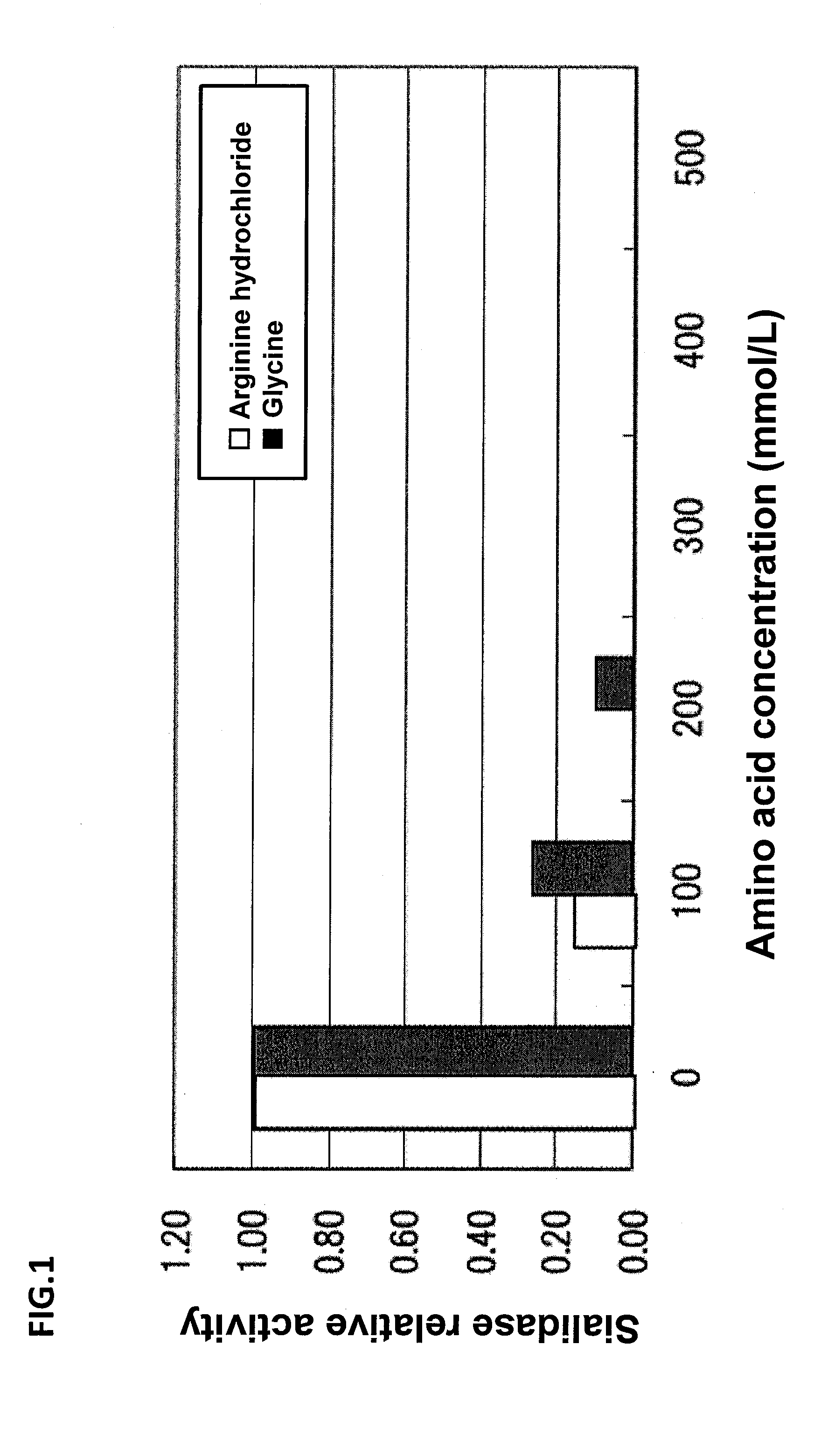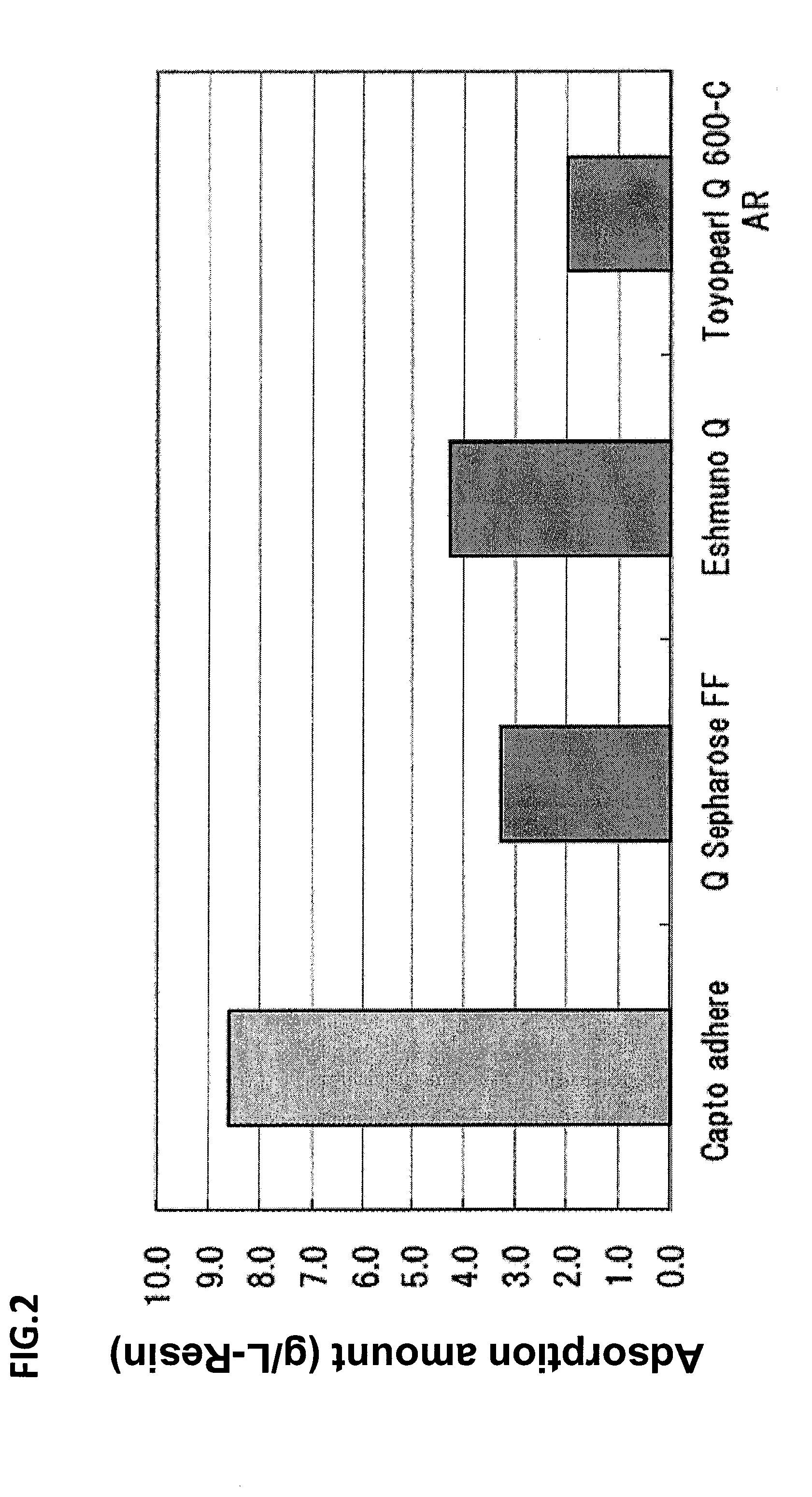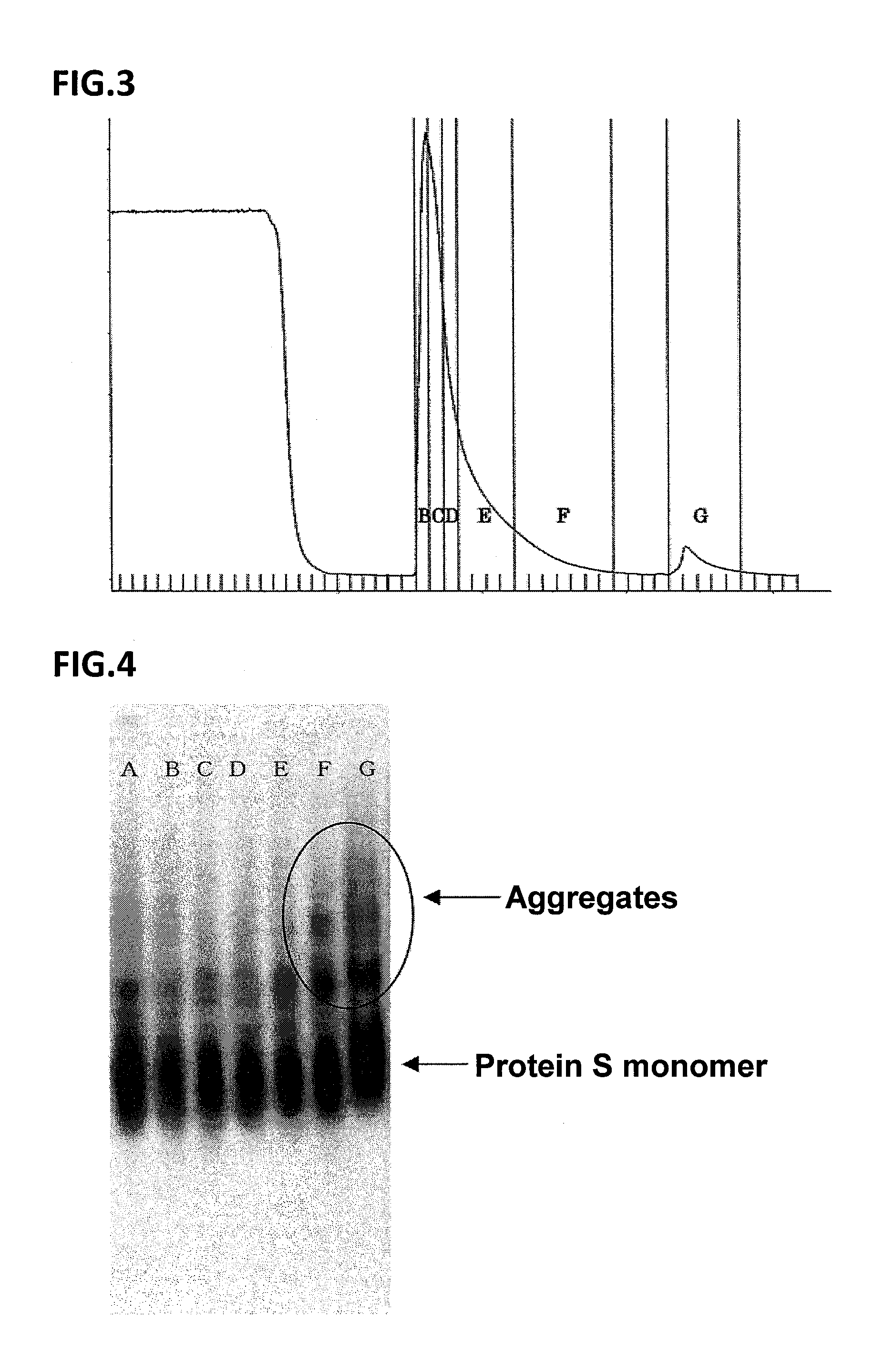Method for purifying protein
a protein and purification technology, applied in the field of protein purification, can solve the problems of difficult and challenging to perform isolation and purification to meet the purity requirements of pharmaceuticals, no standard method, no always easy, etc., and achieve the effect of efficiently purifying the protein, efficiently recovering the purified protein, and efficiently removing impurities
- Summary
- Abstract
- Description
- Claims
- Application Information
AI Technical Summary
Benefits of technology
Problems solved by technology
Method used
Image
Examples
example 1
Example of a Method for Removing Sialidase from an Antithrombin Culture Supernatant Using a Mixed Mode Carrier to Recover an Object
[0284]A CHO cell culture supernatant containing about 380 mg of Antithrombin was directly passed through a mixed mode column (manufactured by GE Healthcare, Capto adhere, column volume: 38 mL) equilibrated with buffer AA (100 mmol / L sodium chloride, 20 mmol / L sodium phosphate buffer, pH 6.0) to adsorb Antithrombin thereto.
[0285]The column was washed with 195 mL of buffer AA (100 mmol / L sodium chloride, 20 mmol / L sodium phosphate buffer, pH 6.0), and then 152 mL of buffer AB (350 mmol / L sodium chloride, 20 mmol / L sodium phosphate buffer, pH 7.0) was applied to elute Antithrombin.
[0286]The Antithrombin concentration and the neuraminidase activity in the washing fraction before elution and in a particular range of eluate were measured by reversed-phase HPLC method [J. Chromatography B, 662, 209 (1994)] and enzyme assay [Glycobiology, 3, 455 (1993)], respect...
example 2
Example of Controlling the Number of Bound Sialic Acids of Antithrombin Using the Mixed Mode Carrier (Example of a Method for More Increasing the Number of Bound Sialic Acids Using a Glycine Buffer)
[0291]A CHO cell culture supernatant containing about 380 mg of Antithrombin was directly passed through a mixed mode column (manufactured by GE Healthcare, Capto adhere, column volume: 38 mL) equilibrated with buffer AC (300 mmol / L glycine, 100 mmol / L sodium chloride, 20 mmol / L sodium phosphate buffer, pH 6.0) to adsorb Antithrombin thereto.
[0292]The column was washed with 195 mL of buffer AC containing glycine (300 mmol / L glycine, 100 mmol / L sodium chloride, 20 mmol / L sodium phosphate buffer, pH 6.0), and then 152 mL of buffer AB (350 mmol / L sodium chloride, 20 mmol / L sodium phosphate buffer, pH 7.0) was applied to elute Antithrombin. The number of bound sialic acids of Antithrombin recovered in the particular range of fractions after elution was measured in the same manner as in Exampl...
example 3
Example of Controlling the Number of Bound Sialic Acids of Antithrombin Using the Mixed Mode Carrier (Example Showing that the Glycine Buffer can be Replaced by Other Amino Acid Buffer in Example 2)
[0294]Arginine hydrochloride or glycine of a final concentration of 0 to 500 mmol / L was added to the aqueous solution containing Antithrombin obtained in the elution process of Comparative Example 1. The neuraminidase activity in each solution was measured in the same manner as in Example 1. The results are shown in FIG. 1.
[0295]As shown in FIG. 1, when the neuraminidase activity at the loading amount of amino acid of 0 mmol / L was regarded as 1.0, the relative activity was about 0.2 by addition of 100 mmol / L of arginine hydrochloride or glycine. Further, the relative activity was 0 (below the detection limit) by addition of 200 mmol / L or more of arginine, or 300 mmol / L or more of glycine.
[0296]These results indicate that purification as in Example 2 can be performed by replacement of glyc...
PUM
| Property | Measurement | Unit |
|---|---|---|
| Fraction | aaaaa | aaaaa |
| Fraction | aaaaa | aaaaa |
| Hydrophobicity | aaaaa | aaaaa |
Abstract
Description
Claims
Application Information
 Login to View More
Login to View More - R&D
- Intellectual Property
- Life Sciences
- Materials
- Tech Scout
- Unparalleled Data Quality
- Higher Quality Content
- 60% Fewer Hallucinations
Browse by: Latest US Patents, China's latest patents, Technical Efficacy Thesaurus, Application Domain, Technology Topic, Popular Technical Reports.
© 2025 PatSnap. All rights reserved.Legal|Privacy policy|Modern Slavery Act Transparency Statement|Sitemap|About US| Contact US: help@patsnap.com



